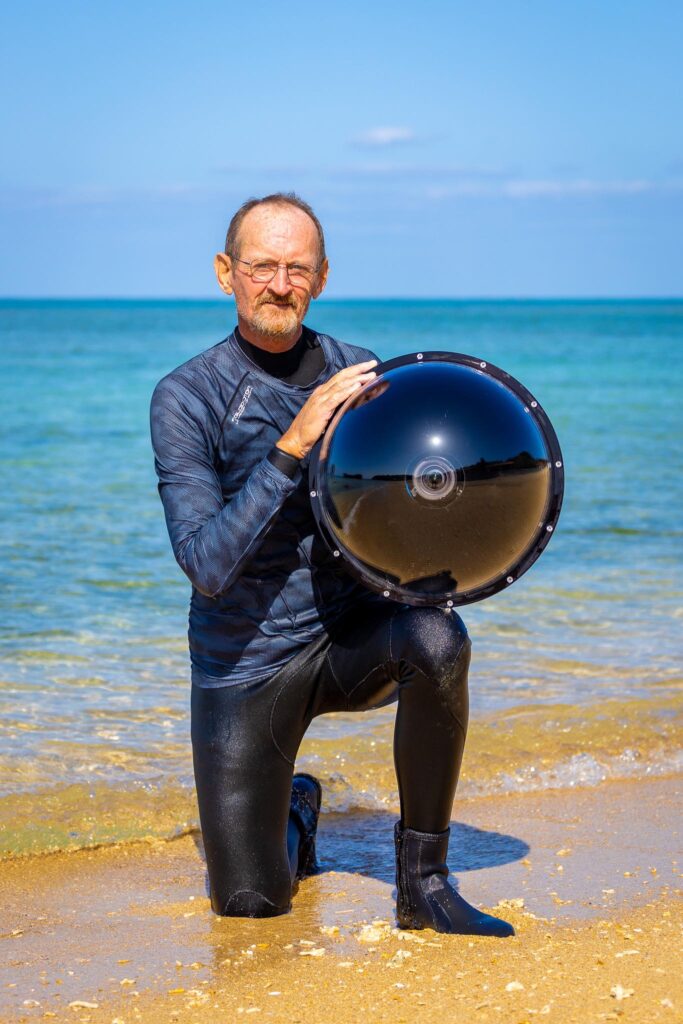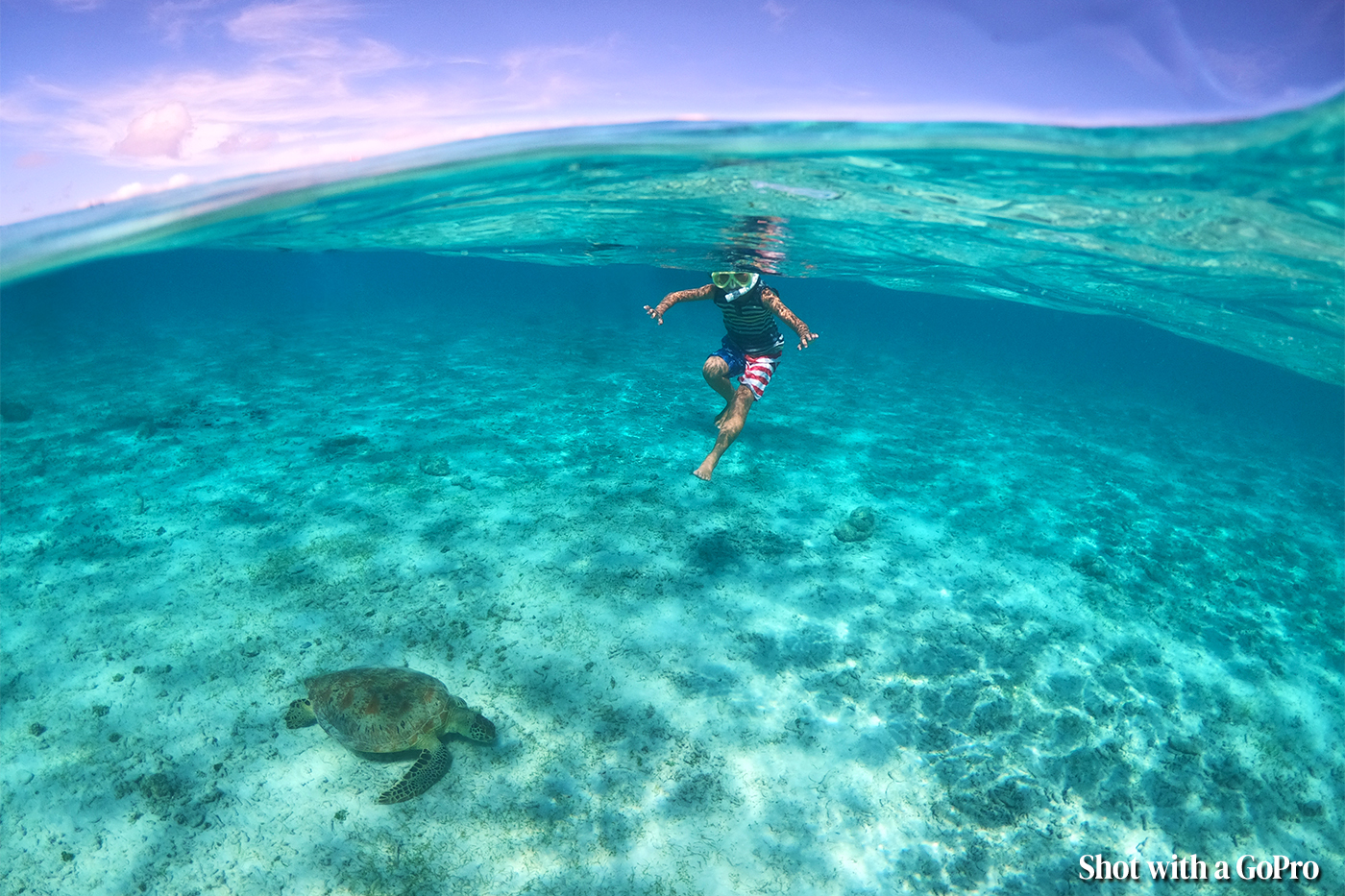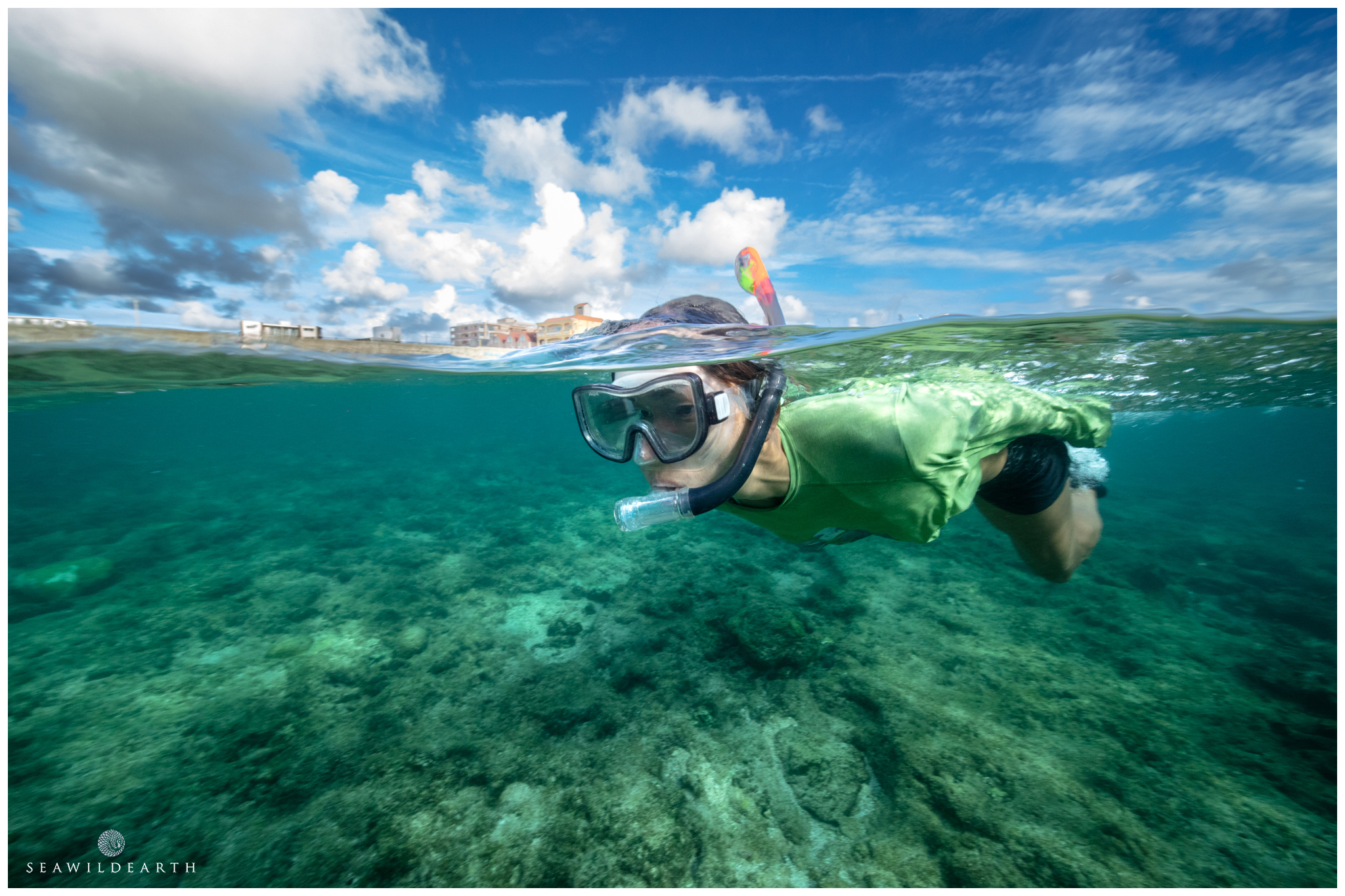Stepping Into the Wet Stuff
Ocean activities when suffering with a particularly nasty AutoImmune disease presents a new set of risks, but a life without the embrace of the Ocean, is not a life I want to contemplate.
Stepping into the wet stuff again after such an extended period feels, well, strange, for want of a better word. After getting my AIH (AutoImmune Hepatitis) diagnosis there I was thinking "well bang goes my water imaging." The more I started to think about it though the more I thought that may not be the case, in all reality all that was needed was the refocusing of my endeavors to diversify my ways a little. In life we cannot simply run from everything that can potentially harm us. Nobody wants to live in a greenhouse protected from having any fun, what fun could life be without the odd danger, a life without hurdles presents no challenge. That's not the life for me.

Wild Horses won't keep me from the Ocean.
The main treatment for autoimmune diseases is the use of immunosuppressive medications which are designed to suppress the ability of the immune system so that it is less active and cannot attack the body to damage and destroy cells as it would do normally. However, there is a high risk to divers when diving while taking immunosuppressants since these medications often decrease the function of the immune system leaving the individual susceptible to infection from bacteria and or viruses. The marine environment, whether salt water or fresh water, is full of bacteria and viruses, many of which are new to a diver. Those people who are taking immunosuppressants are at a much higher risk of getting an infection and becoming ill from anything that they may encounter in the water.
One thing that I hadn't done since I was based in Bali prior to our decision move to Japan to raise our son, was surf photography. I thought of looking to get back into that albeit on a lesser scale than simply heading out to spend hours on end swimming in the waves with a housing, although I still do that on occasion. Given the new set of parameters I now find myself having to deal with I have since diversified into planning on shooting more fine art style Ocean based photography in the realm of what is known as split water photography. This is the style of imaging where the viewer sees certain elements from above and below the water surface in the same image.
Benefits of shooting split water shots allow me to stay in relatively shallow water where I have a much lesser risk of inadvertently ingesting Ocean water. At least I can keep it to a minimum with this form of Ocean imaging. Not 100% risk free, but where's the fun in that? Stepping into the wet stuff never felt so good. I do also snorkel a little but try not to use a snorkel so I have to raise my head, exaggeratedly so, out of the water to inhale. That's fine, I can handle that.
For split shots, to get a better understanding of what they are check out some of these awesome shots on Google images. This will give you a better understanding of the realm I'm now looking to delve into in greater depth, excuse the pun. OK so for the equipment. Thus far I have not made the switch to mirrorless cameras, except for when shooting video. As I was aiming to reside with stills for split water shoots I'm staying with the Canon EOS 5DSr for the resolution and the 5D MkIII for the lower light abilities given that I also shoot a lot of clients under the Milky Way as a specific shoot here in Okinawa where I'm based.
Beyond the camera gear, in order to protect that investment from the salty Ocean water I need to place my camera into a splash or surf housing. I thought about a dive option but in reality I will only be shooting to a maximum depth of 10m / 33fsw on breath hold diving when needed which meant I didn't need to go the rather extensive additional investment in a dedicated dive housing . From there for the split water shoots I needed to add a dome port, and what a dome port it is. I bit the bullet and opted for one of the larger commercially available, at the time of purchase, dome ports made by a North American surf housing brand. Measuring a whopping 16" it looks like I'm swimming while holding on to a clear perspex mooring buoy! But it is needed. I will be going into greater details in future blogs about the whole science of using dome ports for split water photography. Lens wise I'm shooting a Laowa 12mm f2.8 zero distortion lens which complements this dome perfectly.

Josh meeting an ancient mariner.
With so many options available to us a lot of folks could simply ask "Why not just use a GoPro?" This image on the right was shot with a GoPro during a family vacation to the neighboring Kerama Islands. To the everyday viewer it's an acceptable family vacation memory, and it is, I love it. But as with the majority of all photographers, we are our own worse critics. Meniscus width is everything. "Sorry, what?". When you have a lens close to the water line it looks very much fatter and blurred.
Basically the bigger the dome port, the further the water is pushed away from the lens. In doing so that allows the waterline to approach or surpass the minimum focal distance of the super wide angle lens one may be using with the shooting rig. In simple terms it allows the lens to then, if it is the desire of the photographer, to focus perfectly on the waterline and this have that appear as a more defined and finer water line. It's all about the aesthetics and image results.
From here there are a number of other elements to take into consideration with regards to focusing the camera. I tend to work with manual lenses so it's a matter of setting the lens up pre-splash and then hoping I've got the right settings dialed in. I'm at the point now where it's just a matter of fine tuning the focusing distance with the Laowa 12mm f2.8. Hopefully I'll be able to post a few images of that progression in the coming days and weeks. We have a trip for Amami Oshima planned so I may or may not take that with on that trip as the plan for there is more ornithological, I'm chasing imagery of an endemic bird that lives on that island. If you see that posted here on a blog soon you'll know I was able to get that shot, if not then the dome port will be being pit through it's paces.
Being fortunate enough to live in the setting that is Okinawa, and further, to be based in a location that's just a couple of minutes walk to a pretty awesome beach and snorkeling spot just means that I often make the demands of my wife and part time model, Terri, to join me when I need to test more imaging theories. It's an awesome thing to think that my stepping into the wet stuff has now transitioned into a family affair.

The good lady wife, Terue, doubles as my impromptu model as I look to figure out the best focus options via trial and error, the best way to learn.
"Only we humans make waste that nature can’t digest".
Charles Moore - Oceanographer
About the Author
Internationally recognized as a provider of quality mixed media Mark Thorpe is always on the search for captivating content.

Photographer / Cameraman
Mark Thorpe
Emmy Award Winning wildlife cameraman and Internationally published landscape photographer Mark Thorpe has been an adventurer since he could walk! Spending 17yrs as an Underwater Cameraman at the start of his imaging career the highlight of which was being contracted to work with National Geographic. In that role as a field producer and cameraman he's been privy to a mixed bag of hair raising adventures. For some reason he was always selected for projects relating to large toothed marine predators such as Great White and Tiger Sharks, Sperm Whales and Fur Seals. Additionally he has also been active within Southern Africa on terrestrial projects dealing with a wide array of iconic wildlife.
Currently based in Okinawa, Japan he's always on the lookout for his next big adventure. He shares his exploits online with a totally organic social audience. Sponsored by a number of photographic industry manufacturers he is constantly scouring the islands for captivating landscape and 'Oceanscape' compositions. Videography wise he continues to create short photographic tutorial videos as well as content to promote the diversity of wildlife within the Okinawa prefecture as well as a growing lean towards matters of conservation and responsible environmentalism.
Mark has long been an advocate of simplified living. Fortunate enough to have a partner whom shares that vision he is increasingly vocal about what he perceives to be the requirement for man to change his ways. He advocates for people to change and adopt what he calls a true L.I.F.E or Low Impact Focused Existence in order that future generations also have the opportunity to enjoy the natural wonders of this planet to the same extent that his generation has. There is a growing sense of need for such a radical change.
